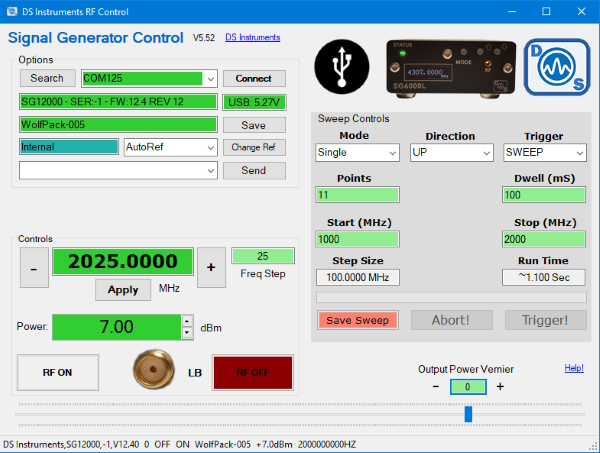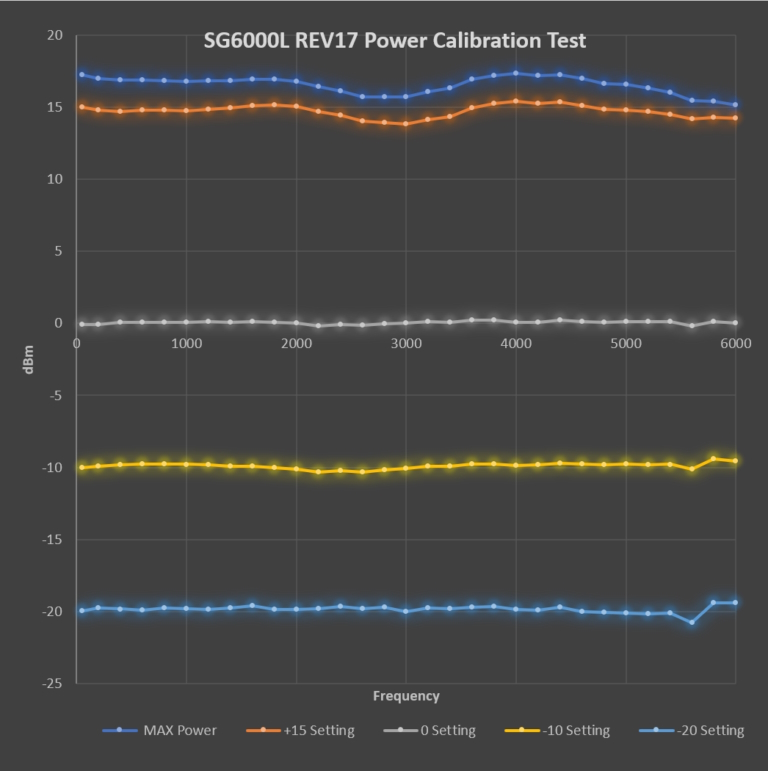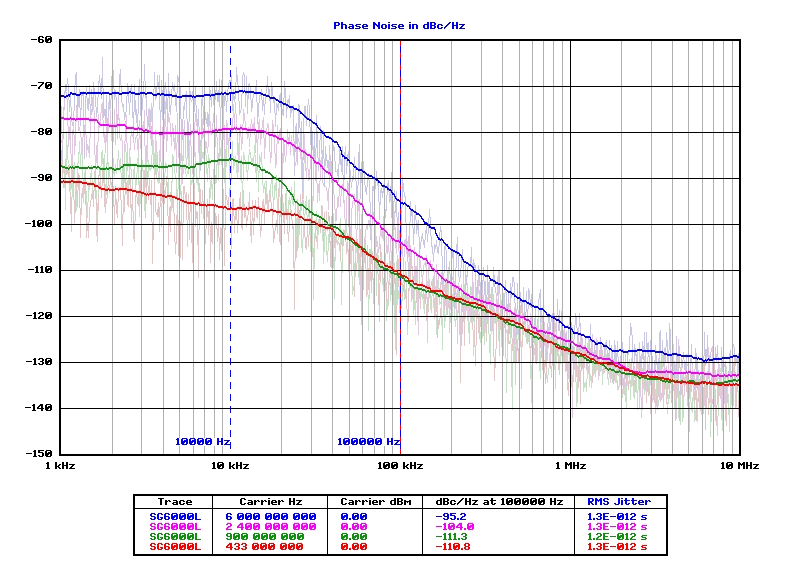Features:
- Stand-alone and USB remote operation
- Up to 6GHz output frequency
- Adjustable output power (Step & Variable)
- Industry-standard SCPI command support
- Internal ±2.5PPM TCXO 10MHz reference
- Front user frequency step buttons
- Frequency-sweeping support
- Front-mounted bright OLED display
- Sturdy black all-aluminum enclosure
- Simple Windows control GUI
- Low voltage monitor
- Powered from standard micro-USB like a smartphone
- Easy to interface with all software packages (Matlab, python, android, linux, ios...)
The DS Instruments SG6000L ultra-compact RF Signal Generator continues to set the industry standard in affordable and portable RF Signal Generation. The SG6000L enables users to generate a high quality RF signal easily and at extremely low cost without need for a host PC. This fully synthesized, modern fractional N synthesis device covers 7 octaves from 24 to 6000 MHz. Max output power is typically above +15 dBm and can be adjusted downward in 0.5dB steps, or continuously via the internal variable attenuator. The RF output step size varies from a maximum of ~3 KHz to less than 40 Hz, depending on band of operation. The crisp OLED display provides useful feedBack for the user, and front control buttons provide a quick alternative to USB control. Like most of products, the SG6000L easily fits in the palm of your hand, making it a truly portable and bench-space-saving device.
System Operation Modes:
- RF Power Meter and Frequency Counter (simultaneous)
- Signal Generator & Power Meter (simultaneous)
- Power Meter (manual frequency calibration)
- Frequency Counter
- RF Signal Generator
- High-power RF Divider (1X, 2X, 4X, 8X)
SG6000L Common Applications:
- Automated testing environments
- General RF Lab use
- Flexible LO sourcing
- Antenna design
- EMC Testing
- Production verification and testing
- Educational / university lab use
- Aerospace / Defense Research
- 802.11n Development / Testing
- LTE Engineering
Signal Source Mechanical Data:

Windows PC Control Software:

RF Performance Highlights:

